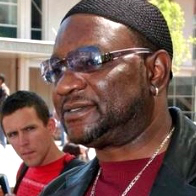Rascals case in brief
In the beginning, in 1989, more than 90 children at the Little Rascals Day Care Center in Edenton, North Carolina, accused a total of 20 adults with 429 instances of sexual abuse over a three-year period. It may have all begun with one parent’s complaint about punishment given her child.
Among the alleged perpetrators: the sheriff and mayor. But prosecutors would charge only Robin Byrum, Darlene Harris, Elizabeth “Betsy” Kelly, Robert “Bob” Kelly, Willard Scott Privott, Shelley Stone and Dawn Wilson – the Edenton 7.
Along with sodomy and beatings, allegations included a baby killed with a handgun, a child being hung upside down from a tree and being set on fire and countless other fantastic incidents involving spaceships, hot air balloons, pirate ships and trained sharks.
By the time prosecutors dropped the last charges in 1997, Little Rascals had become North Carolina’s longest and most costly criminal trial. Prosecutors kept defendants jailed in hopes at least one would turn against their supposed co-conspirators. Remarkably, none did. Another shameful record: Five defendants had to wait longer to face their accusers in court than anyone else in North Carolina history.
Between 1991 and 1997, Ofra Bikel produced three extraordinary episodes on the Little Rascals case for the PBS series “Frontline.” Although “Innocence Lost” did not deter prosecutors, it exposed their tactics and fostered nationwide skepticism and dismay.
With each passing year, the absurdity of the Little Rascals charges has become more obvious. But no admission of error has ever come from prosecutors, police, interviewers or parents. This site is devoted to the issues raised by this case.
On Facebook
Click for earlier Facebook posts archived on this site
Click to go to
Today’s random selection from the Little Rascals Day Care archives….
Click for earlier Facebook posts archived on this site
Click to go to
Today’s random selection from the Little Rascals Day Care archives….
‘Motive behind these sexual acts is never revealed….’

txstate.academia.edu
Joseph Laycock
Jan. 12, 2016
“There are strong similarities between the confessions taken from accused witches in early modern Europe, the testimony of Satanic ritual abuse taken by modern therapists, and accounts of alien abduction given under hypnosis.
“In each of these narratives, a subject describes horrible sexual transgressions performed on them at the hand of a mysterious other: the thorny penis of the Devil, the bizarre anal insertions of Satanists, and the mysterious probing of aliens.
“The motive behind these sexual acts is never revealed and the existence of the perpetrators is usually in doubt….”
– From “Carnal Knowledge: The Epistemology of Sexual Trauma in Witches’ Sabbaths, Satanic Ritual Abuse, and Alien Abduction Narratives” (abstract) by Joseph Laycock in Preternature: Critical and Historical Studies on the Preternatural (2012)
Did prosecutors and therapists even attempt to ascribe any cause or context to the “bizarre anal insertions” common to the day-care allegations? Candles, Magic Markers, burning flower stems?
Did they think such shocking behavior had appeared full blown out of nowhere? On the list of known sexual perversions exactly which box – or boxes! – would they check?
![]()
The long goodbye: ‘See you in a million years’
Feb. 8, 2012
The indignities endured by Little Rascals defendants were unending and sometimes bizarre. A University of Georgia professor enlisted by the defense to conduct a penile plethysmograph reported that Bob Kelly was aroused by videotapes and slides of only normal heterosexual activity. But the prosecution’s expert countered that not every sex offender would be caught by the test.
Fearful of a clear-thinking jury, prosecutors never missed an opportunity for gratuitous vilification. Nancy Lamb histrionically held up gold-framed portraits of 12 children as she denounced Kelly as “an evil, evil man.” H.P. Williams Jr. saw “no reason he should be restored to the community at any time.”
And how’s this for a melodramatic climax, as reported by the Associated Press:
“Some of Mr. Kelly’s victims, clutching dolls and teddy bears, sat in the front row of the spectators’ section as Judge D. Marsh McLelland… passed sentence (of 12 consecutive life terms). Later, as guards escorted Mr. Kelly out of the courtroom to a police car for the trip to a state prison in Raleigh, some of the children yelled at him, ‘I hate you!’… ‘See you in a million years!’ ”
When will wheels of justice turn for Junior?
Sept. 23, 2013
There’s a bit of an update out of Raleigh on Junior Chandler’s prospects for clemency.
Billy Chandler, Junior’s brother, received this email last week from Pat Hansen in the Governor’s Clemency Office:
“Attorney Mark Montgomery filed a commutation request with this office at the end of Governor Perdue’s term in office. However, due to the volume of requests received, the request was not ‘officially reopened.’ Currently, we are working on all of the cases held over from the Perdue Administration. Unfortunately, I cannot tell you when your brother’s case will be reviewed.”
In North Carolina the governor’s clemency power covers both pardons and commutations. Here’s the stated distinction:
“Commutation – whereby an individual presently incarcerated and serving an active sentence has their sentence commuted or reduced by any number of years, months, or days, or to make parole eligible, or to time served which would release the individual immediately.
“Pardon – may be granted to those individuals who have maintained a good reputation in their community, following the completion of their sentence for a criminal offense. Ordinarily, an applicant must wait to apply until at least five years have elapsed since the applicant was released from State supervision (including probation or parole). A Pardon is merely an official statement attached to the criminal record that states that the State of North Carolina has pardoned the crime. A Pardon does not expunge or erase a criminal record….”
As much as the facts of Junior’s case call for a pardon, a commutation seems not quite as steep a challenge. However great “the volume of requests received,” Junior Chandler’s surely deserves to be at the top of the stack.
Exoneree ‘eventually got the death penalty’

newsobserver.com
Darryl Hunt in 2007.
March 14, 2016
Darryl Hunt, imprisoned for more than 19 years for a murder he did not commit, was found dead in a car in Winston-Salem early Sunday.
“In 1984 at age 19, Hunt was charged with the rape and murder of a newspaper copy editor….” Read more here.
“Hunt was exonerated in 2004 after DNA evidence led police to Willard Brown, who confessed to the killing, and pardoned by then-Gov. Mike Easley.” Read more here.
He was awarded a settlement of more than $1.6 million in 2007 and founded the Darryl Hunt Project for Freedom and Justice, an advocacy group for the wrongfully convicted.
“But Hunt was also haunted by his experiences, said those who knew him. He would use ATMs daily, not so much to get money but so he could create a time-stamped receipt and an image recording his location.” Read more here.
“The trauma of wrongful convictions, years in prison, and the responsibilities he took on after he was free wore Hunt down, (his longtime attorney, Mark Rabil) said.
“ ‘In the long run, he eventually got the death penalty,’ Rabil said.” Read more here.
– From “Darryl Hunt, wrongly convicted of murder, found dead” by Lynn Bonner in the News & Observer (March 13)
Exoneration – what a beautiful word. Misleadingly beautiful for those who forever bear the wounds of wrongful conviction.
In 2007 a New York Times study of 137 DNA exonerees showed that “most of them have struggled to keep jobs, pay for health care, rebuild family ties and shed the psychological effects of years of uestionable or wrongful imprisonment.
Another study suggests New York state parolees experienced “a 2-year decline in life expectancy for each year served in prison.”
Perhaps most chilling: Darryl Hunt surely ranked as one of exoneration’s most heartening success stories.
![]()











0 CommentsComment on Facebook